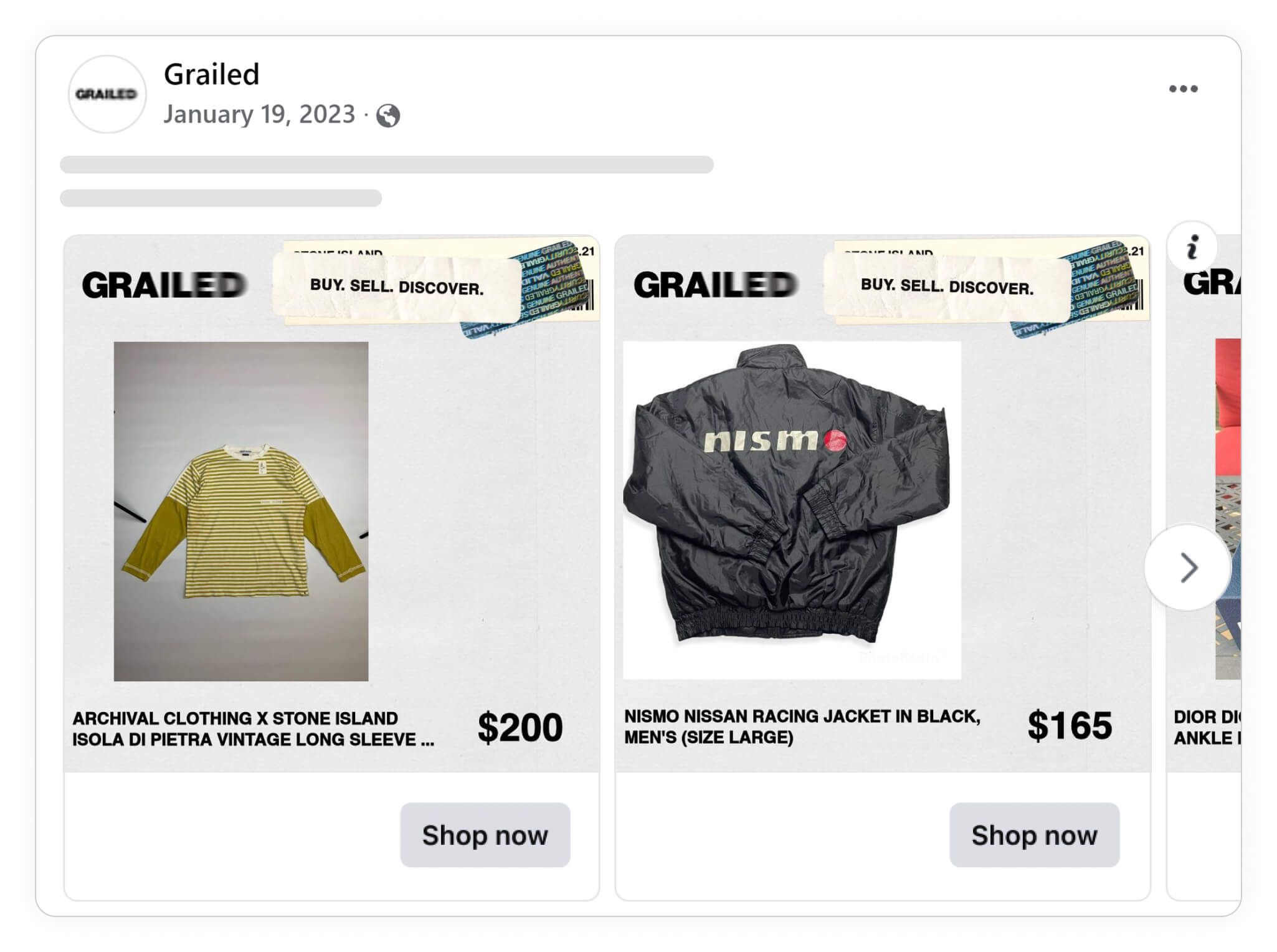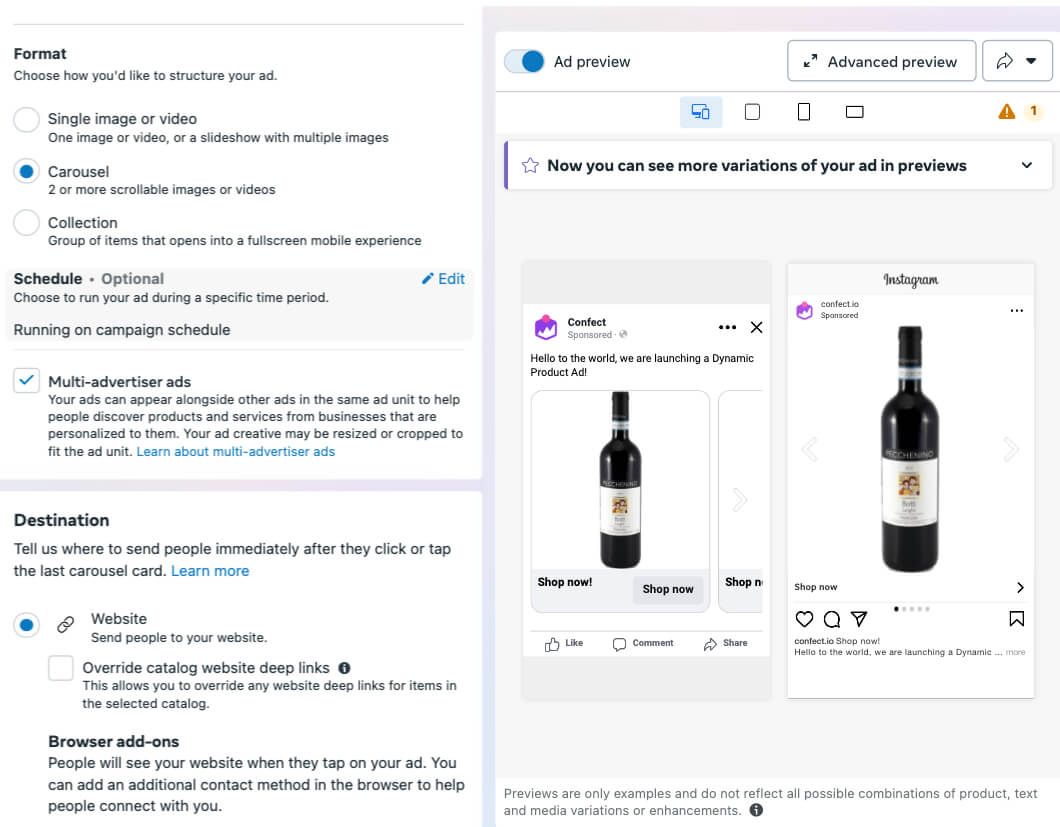Product feed optimization
June 5, 2025
Product feed optimization refers to the process of strategically improving your product feed data. This can include improving product titles and descriptions, adding more detailed categories, or uploading additional product photos.
It’s an important step because it can improve your product visibility and ad performance. When your product feed aligns better with search algorithms, your products stand a better chance of appearing in relevant searches.
Then, if you want to use paid ads, optimised product feeds will improve your targeting, remarketing, and personalisation efforts.
Examples of common channels that rely on optimised product feeds include:
Meta (Facebook and Instagram)
Pinterest
TikTok
Google
Snapchat
Amazon
Marketplaces like eBaya nd Amazon
Affiliate networks like CJ, Awin, and Rakuten
Microsoft Advertising
Price comparison engines like PriceGrabber, Google Shopping, and PriceRunner
Key components of an optimised product feed
Key elements which are typically optimised are the:
Product titles and descriptions to improve search engine visibility and better matching to user queries
Images and image links to stay compliant and increase click-through rates (CTR)
Product categories and item groupings to improve discoverability and ad targeting
Custom labels and attributes to help with segmentation and bidding strategies
GTINs, MPNs and other identifiers like the brand name for trust and catalog matching
Price and availability
Best practices for product feed optimisation
Use relevant keywords in titles and descriptions
Before you even write a product title or description, you should do some keyword research. You can use keyword research tools like Semrush or Ahrefs to identify search terms that your target audience uses.
Then, try to incorporate the most important keywords at the title’s beginning. You can use your description to incorporate other keywords, specifically those linked to use cases, features, benefits, and customer intent.
That said, you should always prioritise your target audience over search engines’ algorithms. As such, the title and description should sound natural without any keyword stuffing (refer to section about common mistakes).
Optimise images for quality and compliance
As each platform has its own compliance guidelines, you’ll have to double-check the platforms’ rules for pixels, formats (JPEG and PNG usually deliver the best quality and compatibility), and overlays.
However, here are some general best practices:
All images should be clear, sharp and shot against a white background
Use multiple angles (e.g. front, back, side, and close-ups) as well as lifestyle or in-use shots to add context
In the case of clothing, include a photo of a model wearing the product to show fit and scale
Use descriptive, keyword-rich file names and alt text (if possible)

Keep feed data up to date and accurate
It’s recommended that you update your product feed daily at minimum. If an item has been discontinued, remove it immediately.
Then, to ensure accuracy, double-check that all your product data match what appears on your website exactly. While you’re at it, fill in as many fields as possible. The more complete your product data, the better your products can match search queries.
Segment products using custom labels
Popular ways that you can segment your products include:
Performance
Price range
Seasonality
Promotion or discount
Business goal e.g. upselling
Whichever criteria you use, use a standard naming convention consistently and create a file that explains the meaning.
Use the correct taxonomy
Product taxonomy refers to the structured system that platforms like Google and Meta use to categorise products (for example, Apparel & Accessories > Clothing > Outerwear > Coats & Jackets).
The golden rule is to be as specific as possible. For example, instead of just listing an espresso machine as a kitchen appliance, you can use coffee makers, if such a category is available.
How to optimise product feeds for specific platforms
Meta (Facebook and Instagram)
Here are key steps for optimising your product feed for Meta:
Ensure you complete all the required fields (content ID, product title, description, availability, condition, price, link, image link, brand name)
Also include optional fields like the most specific Google product category, colour, gender, etc.
Use US English
While the title character limit is 200, try to cap your product title at 65 characters
Product descriptions must be: shorter than 9,999 characters and different from the title, include specific features like colour or material, and use only plain text
Format the price as a number and use a full stop as the decimal point
Indicate currency with a three-letter currency code instead of a symbol (e.g. 9.99 EUR)
Only use links that are hosted on your store’s website
Limit brand names to 100 characters
Upload images that are at least 500 x 500 pixels and no bigger than 8 MB in JPEG or PNG format

Pinterest and other feed-based platforms
Here are key steps for optimising your product feed for Pinterest and similar platforms:
Ensure you’ve completed all the fields comprehensively by adding clear, specific information
Include a mix of broad phrases (e.g. girl’s bedroom) and exact keywords in the text fields
Use broader product categories as well as more detailed subcategories
On Pinterest, create collections with related products using similar characteristics like price, use case, or style
Avoid adding your own targeting restrictions on Pinterest
Tools and software for product feed optimisation
Feed management tools like Feedonomics, DataFeedWatch, or Channable help to import product data from multiple sources, optimise product attributes, distribute your product feed to various platforms, and synchronise data in real time. They’re aimed at e-commerce businesses that want to sell on three or more channels and have 100+ SKUs or inventory that changes frequently.
Compared to manual optimisation, automated feed management and optimisation via one one of these tools is less time-consuming. It also provides better data accuracy, platform compliance, and error monitoring.
Common mistakes in product feed optimisation
Keyword stuffing in titles
It can be tempting to overload your product title with as many keywords as possible. However, it’s at the cost of readability. Shoppers will find it difficult to scan. It might even be confusing, which will lower your CTR.
Missing or incomplete fields
Leaving out critical fields like a brand name or product category makes it more difficult for algorithms to categorise and match your products. In fact, your listing might even get rejected or suspended.
Using low-quality or watermarked images
Low-quality or watermarked images lowers brand credibility and conversion rates. Depending on the platform, you might even violate its rules.
Discover how Instagram Dynamic Ads deliver personalized product recommendations to the right audience here.
Try Confect for Free
Confect can help you to create great-looking Catalog ads and Dynamic Product ads for Facebook, Instagram, TikTok, Snapchat and Pinterest.
